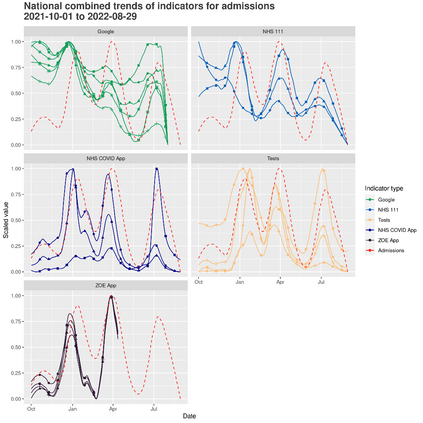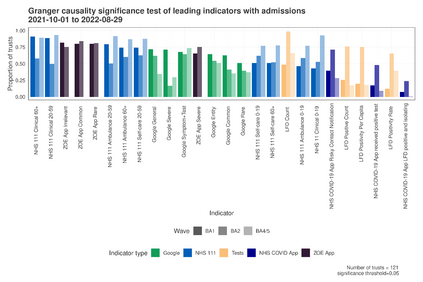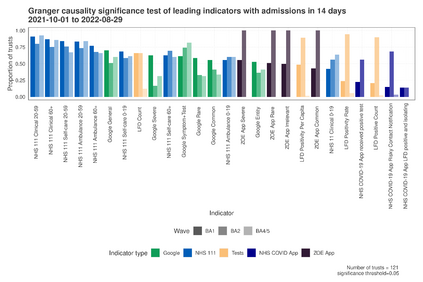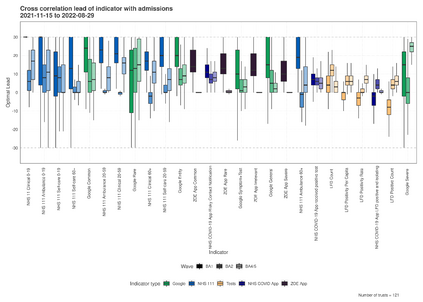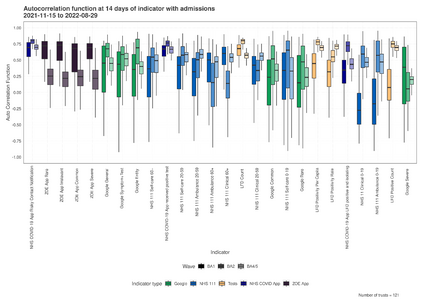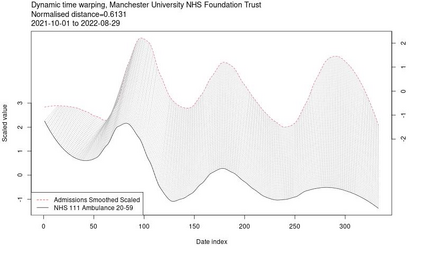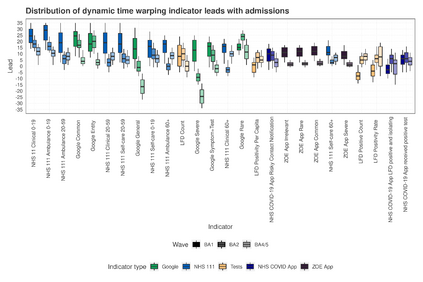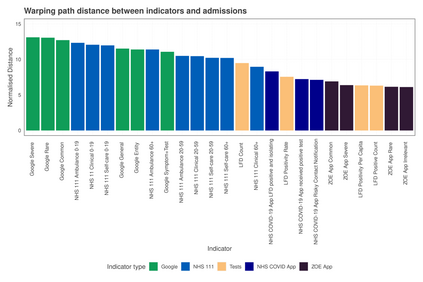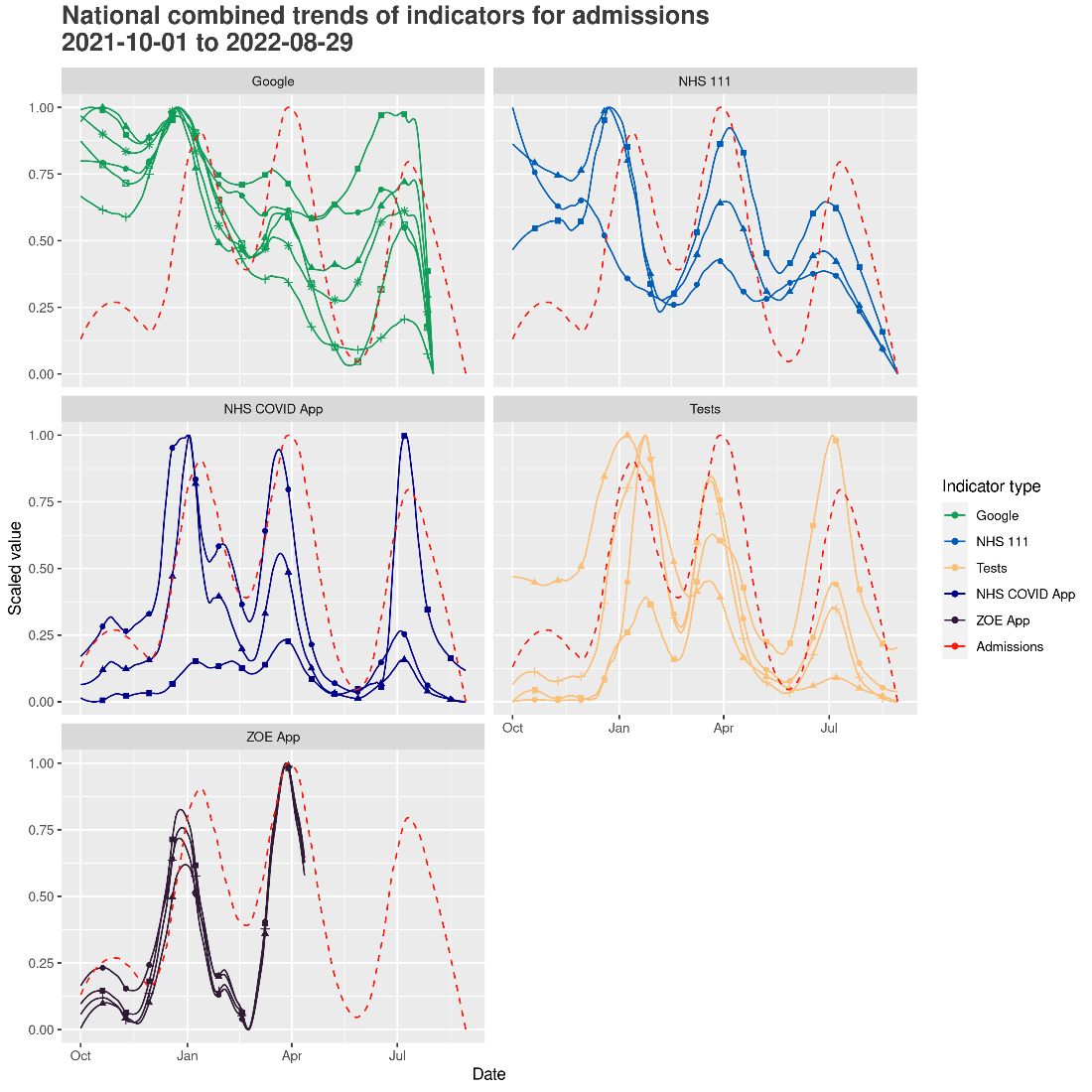Following the UK Government's Living with COVID-19 Strategy and the end of universal testing, hospital admissions are an increasingly important measure of COVID-19 pandemic pressure. Understanding leading indicators of admissions at National Health Service (NHS) Trust, regional and national geographies help health services plan capacity needs and prepare for ongoing pressures. We explored the spatio-temporal relationships of leading indicators of hospital pressure across successive waves of SARS-CoV-2 incidence in England. This includes an analysis of internet search volume values from Google Trends, NHS triage calls and online queries, the NHS COVID-19 App, lateral flow devices and the ZOE App. Data sources were analysed for their feasibility as leading indicators using linear and non-linear methods; granger causality, cross correlations and dynamic time warping at fine spatial scales. Consistent temporal and spatial relationships were found for some of the leading indicators assessed across resurgent waves of COVID-19. Google Trends and NHS queries consistently led admissions in over 70% of Trusts, with lead times ranging from 5-20 days, whereas an inconsistent relationship was found for the ZOE app, NHS COVID-19 App, and rapid testing, that diminished with granularity, showing limited autocorrelation of leads between -7 to 7 days. This work shows that novel syndromic surveillance data has utility for understanding the expected hospital burden at fine spatial scales. The analysis shows at low level geographies that some surveillance sources can predict hospital admissions, though care must be taken in relying on the lead times and consistency between waves.
翻译:随着英国政府“与COVID-19共存”战略的制定和全面检测的结束,医院入院越来越成为衡量COVID-19流行病压力的重要指标。了解英格兰国家医疗服务体系(NHS)信托、地区和国家地理位置的入院领先指标有助于卫生服务规划容量需求,并准备应对不断的压力。我们探讨了在SARS-CoV-2感染史的连续波次中,医院压力领先指标的空时关系。这包括从谷歌趋势、NHS三线电话和在线查询、NHS COVID-19应用、侧向流动装置和ZOE应用中分析互联网搜索量值。我们使用线性和非线性方法,即Granger因果关系、交叉相关和动态时间扭曲,对数据来源进行可行性分析。在细粒度空间尺度上,一些领先指标的时间和空间关系是一致的。在Trusts中,超过70%的人表现出谷歌趋势和NHS查询领先入院,领先时间介于5-20天之间,而对于ZOE应用、NHS COVID-19应用和快速测试,则发现了不一致的关系,随着细节的增加,领先时间变得有限(-7至7天之间的领先关系)。这项工作表明,新型综合监测数据在理解细粒度空间尺度下预测医院负担方面是有用的。分析表明,在低级别的地理学中,一些监测数据来源可以预测医院入院,但在依赖于领先时间和波次间的一致性时必须谨慎。

